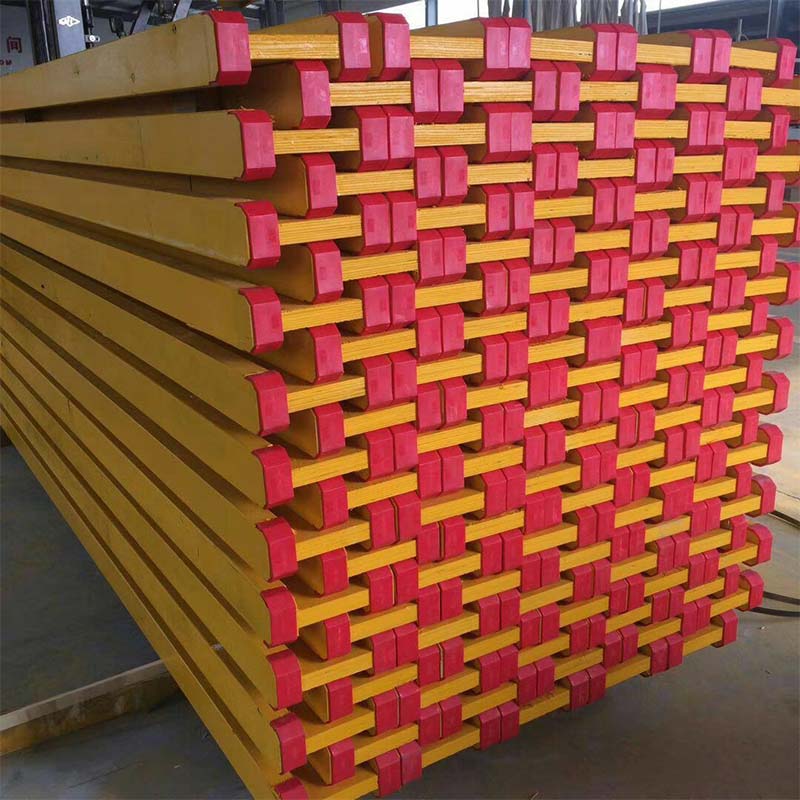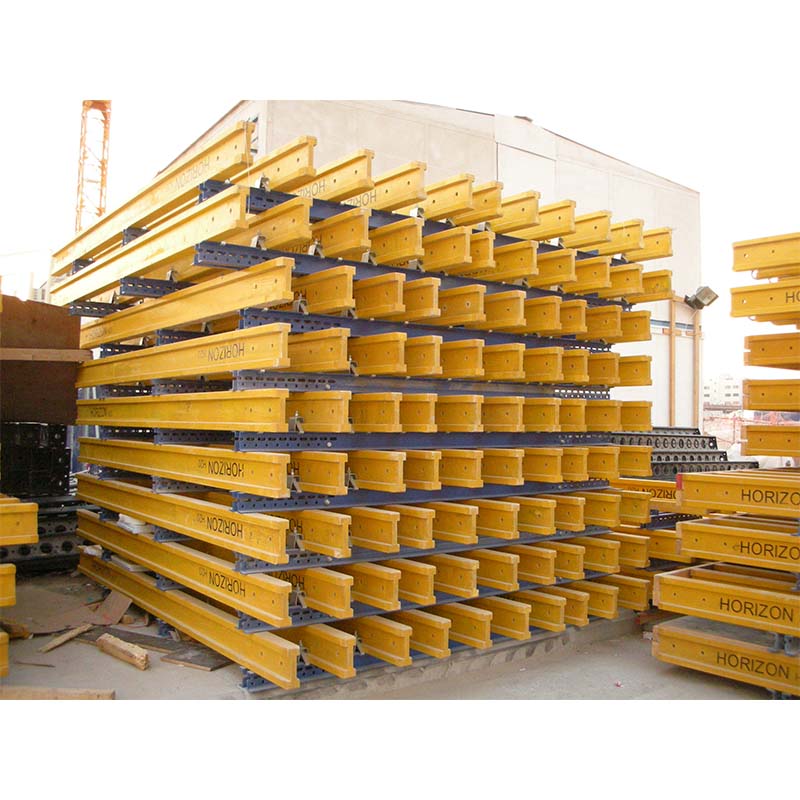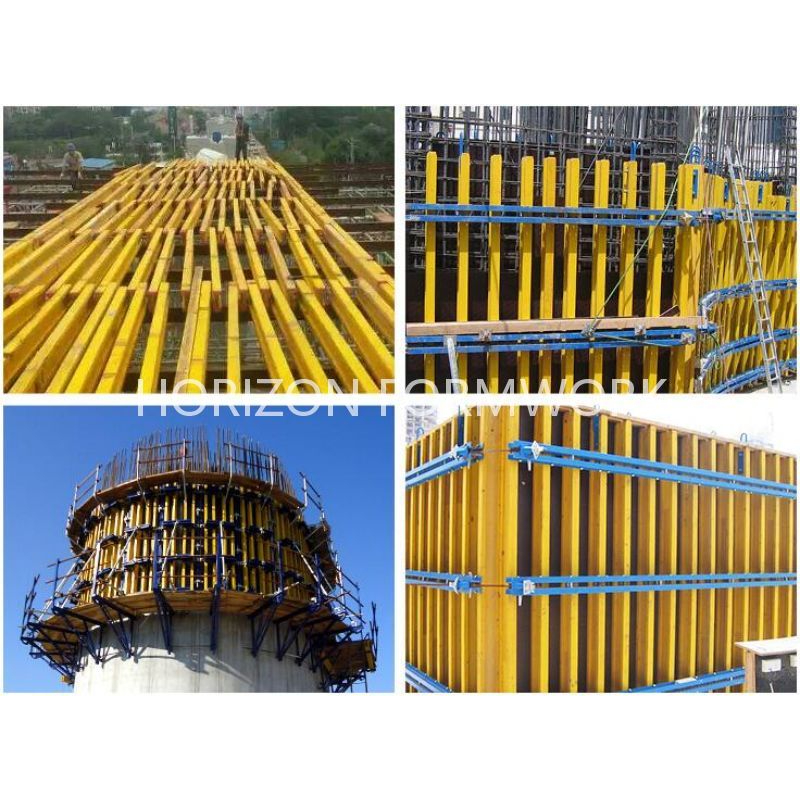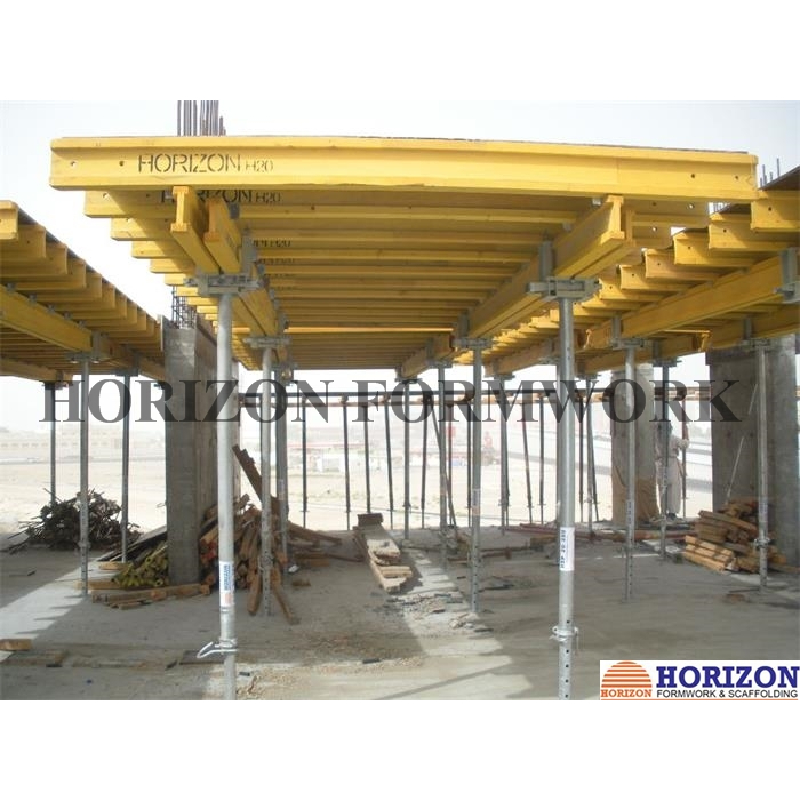aug. . 17, 2025 01:40 Back to list
Timber Beam H20 Formwork & Shuttering - Durable & Reliable
Understanding the Core of Modern Formwork: Timber Beam H20
In the dynamic world of construction, efficiency, safety, and reusability are paramount. Central to achieving these objectives in concrete formwork systems is the timber beam h20. This engineered wood product, characterized by its H-shaped cross-section and specific dimensions (20 cm height), has become an indispensable component for supporting temporary concrete structures. Its robust design allows for optimal load distribution and structural integrity, making it a preferred choice for a wide array of construction projects, from high-rise buildings and bridges to intricate infrastructure developments. The adaptability of the h20 timber beam stems from its carefully optimized design which balances strength with lightweight properties, facilitating easier handling and quicker assembly on site. Moreover, the standardized dimensions ensure compatibility across various formwork systems, whether for slabs, walls, or columns, providing unparalleled versatility. As a critical element in shuttering systems, the timber beam h20 formwork significantly contributes to accelerated construction timelines and reduced labor costs. The market is increasingly seeking reliable formwork solutions, and the demand for high-quality formwork h20 timber beam manufacturer and supplier is consistently growing, especially for applications like timber beam h20 for slab formwork. Industry trends show a continuous shift towards components that not only meet stringent safety standards but also offer economic advantages through their extended reusability and minimal maintenance requirements. This introductory section lays the foundation for understanding why the h20 timber beam for shuttering is not just a building material but a cornerstone of modern, efficient construction practices.
The Advanced Manufacturing Process of H20 Timber Beams: Precision and Durability
The production of a high-quality timber beam h20 is a sophisticated process that begins with the careful selection of raw materials, typically high-grade spruce, fir, or pine wood, known for their excellent strength-to-weight ratio and dimensional stability. These raw materials undergo rigorous quality checks to ensure they meet specific moisture content and structural integrity requirements before processing. The core of the h20 timber beam is usually crafted from solid wood, while the flanges are often made from high-quality lamellar timber, precisely engineered for maximum strength. The manufacturing process involves several critical steps: precision cutting of the timber, finger-jointing to create continuous lengths, and lamination under high pressure with durable, water-resistant adhesives. This lamination process enhances the beam's load-bearing capacity and minimizes natural wood deformations, ensuring the consistent performance required for timber beam h20 formwork. Each beam then receives a protective coating, typically a waterproof, UV-resistant paint or varnish, which not only extends its service life by preventing moisture absorption and protecting against abrasion but also distinguishes it visually.
Throughout the manufacturing cycle, strict quality control measures are implemented. Compliance with international standards such as ISO 9001 for quality management is critical, ensuring that every h20 timber beam manufacturer adheres to the highest production benchmarks. Inspection includes verifying dimensions, checking for defects, assessing adhesive strength, and performing load tests to confirm the beam's structural integrity. The meticulous attention to detail at every stage guarantees that the final timber beam h20 product exhibits superior durability, exceptional dimensional stability, and a reliable service life, even under demanding construction conditions. This systematic approach results in a product optimized for reuse, contributing significantly to project efficiency and cost-effectiveness in diverse applications such as concrete formwork for residential, commercial, and industrial structures. Unlike traditional methods, this engineered approach ensures uniform strength and predictability, setting the standard for reliable formwork components.

Figure 1: Illustration of the H20 Timber Beam production line, emphasizing precision and quality.
Technical Specifications and Performance Metrics of H20 Timber Beams
Understanding the technical specifications of a timber beam h20 is crucial for engineers and construction professionals to ensure structural integrity and optimize material usage. These beams are designed to meet stringent performance criteria, providing reliable support in various formwork applications. Key parameters include dimensions, weight, bending moment capacity (M), and shear force capacity (Q). The standard height of an h20 timber beam is 200 mm, with flange widths typically 80 mm and web thickness around 27-30 mm, though variations can exist based on specific manufacturer design and load requirements. The specific design and construction of the web and flanges are engineered to maximize strength while minimizing material consumption, achieving an excellent strength-to-weight ratio. This balance is critical for ease of handling and erection on construction sites, without compromising the structural support necessary for concrete pours.
Manufacturers often provide detailed technical data sheets that outline the maximum allowable bending moment and shear force for different span lengths, which are essential for structural calculations in formwork design. For example, a typical timber beam h20 might have a bending moment resistance (M-value) ranging from 5.0 kNm to 7.0 kNm and a shear force resistance (Q-value) between 11.0 kN and 13.0 kN, depending on the timber grade and specific design. Stiffness (EI value) is another vital parameter, indicating the beam's resistance to deflection under load, typically around 450-550 kNm². These values directly influence the spacing of the beams in a formwork system, ensuring that deflections remain within acceptable limits as per international building codes. The consistency of these technical parameters across batches is a hallmark of a reliable formwork h20 timber beam manufacturer, providing confidence in their performance for critical applications like timber beam h20 for slab formwork. Below is a representative table of key technical specifications:
| Parameter | Typical Value | Unit |
|---|---|---|
| Beam Height (H) | 200 | mm |
| Flange Width (W) | 80 | mm |
| Web Thickness (t) | 27-30 | mm |
| Weight per Meter | 4.8 - 5.2 | kg/m |
| Bending Moment Resistance (M) | 5.0 - 7.0 | kNm |
| Shear Force Resistance (Q) | 11.0 - 13.0 | kN |
| Stiffness (EI) | 450 - 550 | kNm² |
| Standard Lengths | 1.8 to 6.0 (increments of 0.3) | m |
Table 1: Representative technical parameters for standard H20 timber beams. Values may vary by manufacturer.

Figure 2: Cross-sectional view highlighting the engineered dimensions of an H20 Timber Beam.
Diverse Applications Across Construction Sectors with Timber Beam H20
The versatility of the timber beam h20 makes it an invaluable asset across a multitude of construction applications, extending far beyond simple slab formwork. Its primary role as a structural support in concrete formwork systems is evident in its widespread adoption for both horizontal and vertical concrete elements. For instance, in slab formwork, the timber beam h20 for slab formwork acts as the main or secondary support for plywood or steel facings, ensuring a flat and level concrete surface. Its lightweight nature significantly speeds up erection and dismantling, directly translating to reduced labor costs and faster project completion times. Beyond slabs, these beams are equally effective in wall formwork, where they provide rigid support for vertical concrete pours, ensuring the precise alignment and plumbness of walls. Similarly, in column formwork, the H20 beam’s strength and stability allow for the construction of perfectly shaped columns, crucial for the structural integrity of any building.
Furthermore, the application of h20 timber beam for shuttering extends to more complex engineering projects such as bridge construction, where they facilitate the creation of complex bridge decks and piers. Their robust design and predictable performance are essential for these demanding environments. In tunnel construction, H20 beams are used for temporary supports and lining formwork, demonstrating their adaptability to challenging geometries and heavy loads. The reusability of these beams, often exceeding 20-30 cycles with proper care, provides a significant return on investment, making them a sustainable choice for contractors. This extended lifespan directly reduces the need for new materials, lowering both operational costs and environmental impact. The consistent quality provided by a reputable timber beam formwork manufacturer ensures that these beams maintain their load-bearing capacity and dimensional stability throughout their service life, a critical factor for project safety and efficiency.

Figure 3: Timber beam h20 efficiently deployed as primary support in a slab formwork system.
Key Advantages & Comparative Analysis of H20 Timber Beams
The selection of formwork beams significantly impacts project timelines, safety, and overall cost. When comparing materials, the timber beam h20 consistently demonstrates compelling advantages over traditional alternatives like solid timber and steel beams. Its engineered design optimizes the strength-to-weight ratio, ensuring high load-bearing capacity while remaining lightweight for easy handling. This characteristic directly contributes to faster erection and dismantling times, reducing labor costs and improving site safety. Unlike solid timber, H20 beams are less susceptible to warping, twisting, or shrinking due to moisture fluctuations, thanks to their laminated construction and protective coatings. This dimensional stability guarantees consistent performance across various weather conditions and multiple reuse cycles.
Furthermore, the reusability of a high-quality h20 timber beam is a major economic and environmental benefit. With proper maintenance, these beams can be used for 20-30 concrete pours or more, drastically lowering the per-use cost compared to less durable materials. Their standardized dimensions ensure compatibility with a wide range of formwork accessories and systems, simplifying inventory and logistics for contractors. While steel beams offer superior strength for extreme loads, their heavier weight, higher cost, and susceptibility to rust (if not properly maintained) can present logistical challenges and long-term expenses. The H20 beam strikes an optimal balance, providing robust support with practical advantages that enhance operational efficiency on any construction site. This makes it a preferred choice for many timber beam formwork manufacturers and contractors seeking a balance of performance, cost-efficiency, and environmental responsibility.
| Feature | H20 Timber Beam | Solid Timber Beam | Steel Beam (e.g., I-beam) |
|---|---|---|---|
| Weight/Handling | Very Lightweight, Easy Manual Handling | Moderate Weight, Can be Heavy | Heavy, Requires Mechanical Lifting |
| Dimensional Stability | Excellent (engineered, laminated) | Variable (prone to warping/cracking) | Excellent (rigid) |
| Reusability Cycles | High (20-30+) | Low to Moderate (5-10) | Very High (100s, if maintained) |
| Cost-Effectiveness (per use) | High (due to reusability & handling) | Low to Moderate | Moderate (high initial cost, long lifespan) |
| On-site Adaptability | Good (can be cut if needed) | Good (can be cut) | Limited (requires specialized cutting) |
| Environmental Impact | Lower (renewable, reusable) | Variable (depends on sourcing) | Higher (energy-intensive production) |
Table 2: Comparative analysis of H20 Timber Beams against alternative formwork beam materials.

Figure 4: The lightweight and robust nature of H20 timber beams streamlines on-site operations.
Choosing the Right Partner: HorizonForm as Your Preferred Timber Beam Formwork Supplier
Selecting a reliable timber beam formwork manufacturer is critical for the success and safety of any construction project. HorizonForm stands as a leading h20 timber beam manufacturer, distinguished by our unwavering commitment to quality, extensive industry experience, and comprehensive customer support. With years of dedicated service in the formwork industry, we understand the intricate demands of modern construction. Our manufacturing processes for the timber beam h20 adhere to stringent international quality standards, including ISO certifications, ensuring that every beam delivers consistent performance and reliability. We pride ourselves on the meticulous selection of raw materials and advanced production techniques that result in beams capable of enduring multiple use cycles, providing exceptional long-term value to our clients. Our expertise is not just in manufacturing but also in understanding the specific needs of diverse construction scenarios, enabling us to offer tailored solutions.
Beyond standardized products, HorizonForm specializes in providing customized formwork solutions to address unique project requirements. Whether it's specific lengths, varying load capacities, or integration with existing formwork systems, our technical team collaborates closely with clients to develop precise solutions. Our commitment to client success is further exemplified by our robust delivery cycle management and comprehensive after-sales support. We understand the importance of timely delivery to keep projects on schedule, and our logistics network ensures efficient distribution of timber beam h20 formwork globally, including reliable china timber beam h20 formwork export services. Furthermore, our products come with a clear warranty commitment, underscoring our confidence in their durability and performance. Clients can rely on our dedicated support team for technical assistance, usage guidelines, and troubleshooting, ensuring optimal utilization and extending the lifespan of their h20 timber beam investment. This holistic approach makes HorizonForm a trusted partner for construction companies worldwide.

Figure 5: Quality assurance and reliable supply are hallmarks of a leading H20 timber beam manufacturer.
Frequently Asked Questions (FAQ) about Timber Beam H20
Q1: What is the typical lifespan of an H20 timber beam?
A1: With proper handling, storage, and maintenance, an H20 timber beam can typically be reused for 20 to 30 cycles or more. Factors like exposure to harsh weather, improper handling, or excessive loading can affect its lifespan. Regular inspection and cleaning are crucial to maximize reusability. Our protective coatings are designed to extend this service life significantly, reducing the need for frequent replacements and making them a cost-effective solution for long-term projects.
Q2: How does the timber beam h20 compare to steel formwork beams?
A2: While steel beams offer high strength, timber beam h20 provides a superior strength-to-weight ratio, making it significantly lighter and easier to handle manually, reducing labor costs and reliance on heavy machinery. H20 beams are also more forgiving with minor impacts and are easier to cut or adapt on-site if minor adjustments are needed. Furthermore, timber is a renewable resource, making H20 beams a more environmentally friendly option compared to steel, especially when sourced from sustainable forests.
Q3: Are customized lengths of timber beam h20 available?
A3: Yes, most reputable h20 timber beam manufacturer, including HorizonForm, offer customized lengths to meet specific project requirements, minimizing waste and optimizing efficiency. Standard lengths typically range from 1.8m to 6.0m in increments of 0.3m, but custom orders can be arranged based on client specifications and order volume. This flexibility ensures that projects can be executed with maximum precision.
Q4: What certifications should I look for in a formwork h20 timber beam manufacturer?
A4: Look for manufacturers with ISO 9001 quality management certification, which indicates adherence to rigorous quality control processes. Other relevant certifications might include those related to timber sourcing (e.g., FSC for sustainable forestry) and specific product performance standards (e.g., European standards like EN 13377 for timber formwork beams). These certifications provide assurance of product quality and ethical manufacturing.
Q5: What is the delivery lead time for timber beam h20 formwork?
A5: Delivery lead times vary depending on order volume, customization requirements, and destination. HorizonForm maintains efficient production and logistics chains to ensure prompt delivery. We recommend contacting our sales team directly with your specific requirements for an accurate estimate. We prioritize timely fulfillment to keep your construction projects on schedule.
References and Further Reading
- European Committee for Standardization. EN 13377: Timber structures - Glued laminated timber - Requirements.
- International Organization for Standardization. ISO 9001: Quality management systems - Requirements.
- Formwork Design and Practice by P. H. K. Ho.
- Construction Technology Handbook by P. K. Singh.
- Wood Handbook—Wood as an Engineering Material. USDA Forest Service, Forest Products Laboratory.
This is the last article
-
Timber Beam H20 Formwork & Shuttering - Durable & Reliable
NewsAug.17,2025
-
Timber Beam H20: Premium Formwork & Shuttering Solutions
NewsAug.16,2025
-
Premium H20 Timber Beam for Formwork & Slab Shuttering
NewsAug.15,2025
-
China Single Sided Wall Formwork: Fast, Flexible Solutions
NewsAug.14,2025
-
Scaffolding Jacks: Durable Screw, U-Head, Swivel & Base Jacks
NewsAug.13,2025
-
Reliable China Single Sided Wall Formwork Manufacturer
NewsAug.12,2025